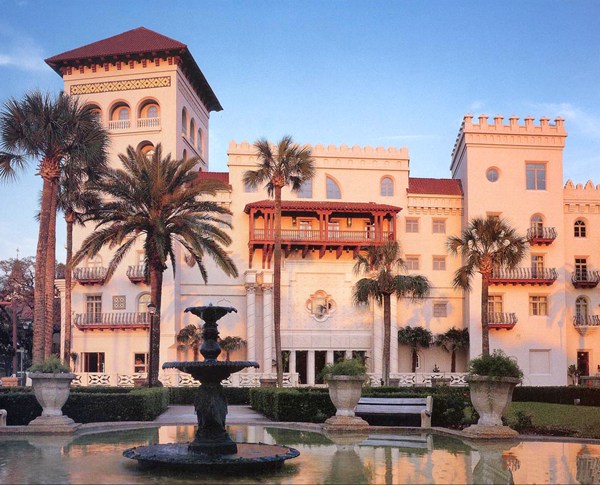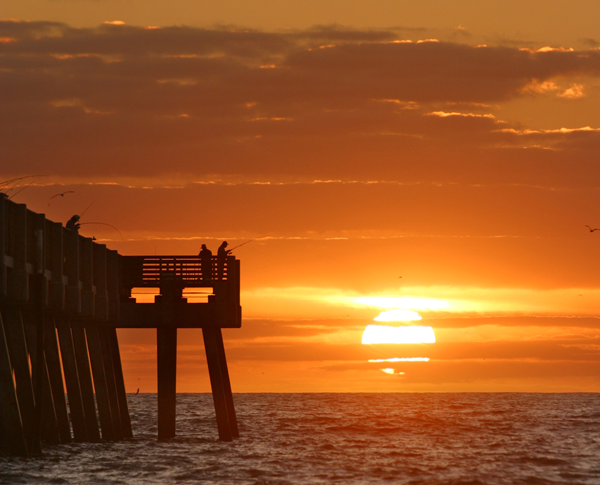North Texas executives and their families flock to the sugar-white beaches of Florida’s panhandle each year. Many, though, are also discovering the state’s “historic coast,” an area in Northeast Florida that encompasses St. Johns County, including St. Augustine and Ponte Vedra. The region offers a wildly different vacation experience—one that adds history and culture into the recreational mix.
St. Augustine is America’s oldest city, settled 50 years before the Mayflower pilgrims arrived at Plymouth Harbor. Situated along the Atlantic Ocean about 40 miles south of Jacksonville and 50 miles north of Daytona Beach, the area was first explored 500 years ago (April 1513) by Spanish conquistador Juan Ponce de León, who’s credited with naming Florida.
At the 15-acre waterfront Fountain of Youth Archaeological Park, you can drink from the legendary spring Ponce de León supposedly was seeking, although it’s one of the area’s more kitschy attractions. History buffs would be better off touring the Castillo de San Marcos National Monument—the country’s oldest masonry fort (that sucker was built to last)—or El Galeón, a stunning authentic replica of the Spanish ships that once sailed along the Florida coast. Also worth a quick look or photo opp is Treasury Street, the country’s narrowest, at just about 7 feet wide (built that way to make it difficult for would-be thieves to rob men carrying chests of gold to the treasury from ships docked in the bay). If the kids are traveling with you, they’ll love Colonial Quarter, an expansive outdoor attraction that takes visitors back to the 16th, 17th, and 18th centuries, as well as the Pirate and Treasure Museum that’s located nearby.

It’s the region’s cultural museums, though, that really shine. They include the Lightner Museum, housed in the former Alcazar Hotel, which was built in 1887 by Henry Flagler. (The founder of both Standard Oil and the Flagler East Coast Railway, Flagler had a profound impact on the development of Florida’s East Coast.) The Lightner offers a fascinating but somewhat bizarre collection of artifacts from America’s Gilded Age—furnishings, clothing, artwork, musical instruments, and more. The former hotel is an attraction in and of itself, with its sparkling mosaic floors, landscaped grounds, and a dining hall set in what once was the hotel’s pool.
Take a moment, too, to walk across the street and see Flagler College. Originally built in 1887 by Flagler as the Ponce de León Hotel, it’s considered one of the country’s finest examples of Spanish Renaissance architecture. It features a rotunda with a giant and ornate domed ceiling and a dining hall with about 80 stained glass windows by Louis Comfort Tiffany.
Another must-see is the waterfront Cummer Museum of Art & Gardens, off the St. Johns River in nearby Jacksonville. Its nearly 5,000 pieces of art date from 2100 B.C. through the 21st century and include the works of Peter Paul Rubens, Winslow Homer, and Norman Rockwell. The Cummer also has one of the world’s largest collections of Meissen porcelain. An exhibit that runs from late November 2013 through the end of February 2014 will showcase a masterwork in the museum’s permanent collection, the evocative “Mother of Sorrows,” a mid-15th century painting by a German artist known only as the Master of the Stötteritz Altar.
Jacksonville also offers the Museum of Contemporary Art, which collects works created primarily since the 1960s. The abstract paintings of Michael Goldberg will be featured in an exhibit that runs through the end of January 2014.
Accommodations in St. Augustine run the gamut from seaside bed and breakfasts to the Casa Monica Hotel. The city’s only four-diamond property sits at Cordova and King streets, next to both the Lightner Museum and Flagler College. The historic hotel wasn’t built by Henry Flagler, but he bought it shortly after it opened in 1888.

Casa Monica is a favorite of traveling executives and celebrities. During one visit, President Bill Clinton autographed a lobby wall—which is pretty funny, given the hotel’s name. (Get it? House of Monica?) Restored in 1999, it’s also home to one of the area’s best restaurants, 95 Cordova. Its menu takes advantage of the area’s bountiful fresh seafood, but also offers options like Duck Two Ways and various cuts of Black Angus beef. The Columbia on St. George Street is a must-visit, with its Snapper Alicante, and Paella a la Valenciana. Its 1905 Salad is prepared tableside, as is its renowned sangria. (Both red and white versions of this wine-and-fruit drink are served seemingly everywhere.)
The waterside Aunt Kate’s is a local favorite that features alligator tail, seafood, and dishes with a Menorcan influence. (A large group of settlers from the Isle of Menorca landed in St. Augustine in the late 1770s, including forebears of the 100-year-old restaurant’s original founder.) And breakfast is served all day at La Herencia Cafe on the cobblestoned Aviles Street, where you can get Cuban specialties like The Guajiro omelet.
The historic coast also offers 42 miles of beaches, ranging from the velvet-sand shorelines of Anastasia Island (accessible by crossing St. Augustine’s Bridge of Lions) to those farther north that are covered with millions of tiny shells. So, even with all of the attractions and cultural offerings in northeast Florida, you can still get your swim-and-sun time in, too.






